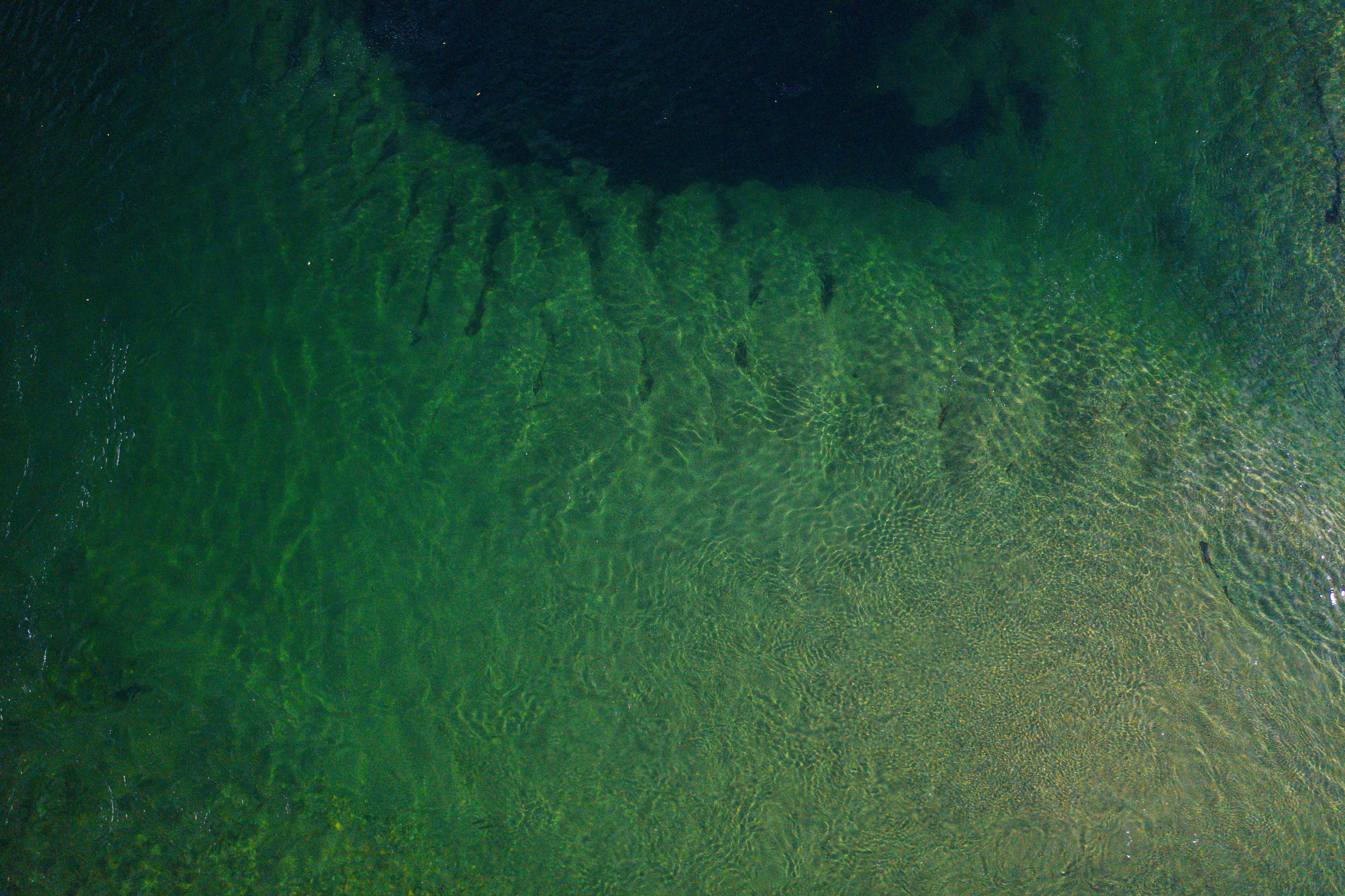TOPWATER TROUT

The heart of every predator holds an element of opportunism and when winter finds big speckled trout massing in shallow coastal waters, there’s no better example.
The colder months typically find some of the largest trout taking up prespawn positions and feeding aggressively to prepare for their forthcoming reproductive season.
Look for these large, savvy fish to hang around deeper grass flats with potholes, oyster bars and the rock and shell-strewn tips of barrier islands and spoil banks. Also, a mullet school is one of your best trout indicators, as the predators often swim with mullet for camouflage and feeding opportunities — either the weak stragglers, or the crustaceans displaced by the vegetarian mullet.
That’s why topwater baits like the LIVETARGET Hollow Body Mullet or your favorite hard body walking bait prove highly productive. In fact, even in the absence of mullet, slowly working a topwater bait across the water’s surface will often deliver the most aggressive bites, as giant trout zero in on the easy prey and launch brutal attacks.
Surface Savagery
Watching that bait saunter across the surface is like cranking the handle of an old-fashioned Jack-in-the-box. The seemingly innocent notes of “Pop, Goes the Weasel” lull you into a monotonous stare until — BOO! — the spring-loaded jester lunges forth and startles you.
Trout generally hook themselves, so don’t overreact and yank the bait away from them. Your best response is to simply raise the rod tip and reel. However, if a fish attacks and misses, there’s a good chance that big speck is sitting not far from the frothy explosion and watching to see if its prey remains within reach.
This is where trout fishing becomes a game of nerves. If you can outlast the fish and simply hold steady while the surface rings settle and let your bait sit motionless, you’ll rev the fish’s engine as it, no doubt, studies the bait for any signs of life.
If there’s one thing a predator can’t handle, it’s a meal trying to flee the dinner table. Once you’ve waited several seconds, give your rod a slight twitch, maybe a brief stutter to mimic a wounded baitfish and prepare for a lightning fast follow-up bite. (Make sure you allow yourself the best opportunity of snaring the fish by retrofitting your hard baits with Mustad 3X strong treble hooks, coated with corrosion-resistant DuraSteel.)
If the trout misses a second time, that usually exhausts its surface interests. Salvage the opportunity by pitching a soft plastic jerk bait rigged on a Mustad Grip-Pin Swimbait Hook and that subsurface ruse typically closes the deal by offering an easy bite.
Send Them Home
If you’re looking for a trout dinner, the smaller fish generally yield better table fare. Safely releasing the giants starts with the right tackle, so use a rod with sufficient “tip” for launching those long casts, but plenty of backbone to quickly subdue a big trout. Even in the cooler water, extended fights can exhaust these big breeder fish and make them easy targets for dolphins and sharks.
While smaller trout typically come to the boat in short order, these giant winter trout are legitimate drag pullers. Even at this size, trout remain a soft body fish, so take care to dehook and release them in optimal condition. That means avoid touching the eyes and gills and don’t squeeze the fish’s tender midsection.
A photo-release is the best way to preserves the memory of a giant trout encounter, but make it quick and do your best to evenly support the fish with one hand near the head and the other near the back end. Remember, these big fish produce a lot of baby trout each year, so make sure they return to the water in good shape.